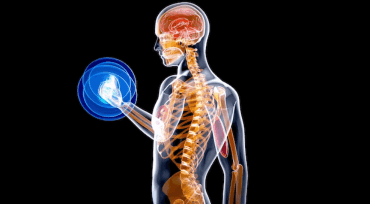Question
a.
Mycobacterium tuberculosis
b.
Hepatitis B virus
c.
Human immunodeficiency virus
d.
all of the above
Posted under Microbiology
Interact with the Community - Share Your Thoughts
Uncertain About the Answer? Seek Clarification Here.
Understand the Explanation? Include it Here.
Q. Diagnostic DNA probes have been developed for
Similar Questions
Explore Relevant Multiple Choice Questions (MCQs)
Q. Which of the following statement(s) is/are true in regards to F+ x F- mating events?
View solution
Q. Which of the following type of recombination does not require homologous sequences and is important for the integration of viral genomes into bacterial chromosomes?
View solution
Q. What information can be generated by interrupted mating experiments?
View solution
Q. Which of the following transport bacterial DNA to other bacteria via bacteriophages?
View solution
Q. When composite transposons are formed
View solution
Q. Which of the following plamids do not possess information for self transfer to another cell?
View solution
Q. The term used for acquisition of naked DNA from its environment and its incorporation in their genome by a bacterium is
View solution
Q. What is term used for a bacterial cell that is able to take up naked DNA?
View solution
Q. Penicillin resistance in staphylococci is acquired due to
View solution
Q. The plasmid which makes the host more pathogenic is
View solution
Q. The expression of gene X (which has promoter Px) is to be monitored. A gene fusion construction for carrying this work will
View solution
Q. The transducing particles carry only specific portions of the bacterial genome in which of the following transduction?
View solution
Q. The correct term for the transfer of genetic material between bacteria in direct physical contact is
View solution
Q. Plasmid that carries genes encoding enzymes, which degrade substances such as aromatic compounds, pesticides or sugar are
View solution
Q. R factors involved in plant-microbe interactions are
View solution
Q. Which of the following is used by microbial genetisists as a tool?
View solution
Q. Which of the following type of recombination does not require homologous sequences and is utilized by mobile genetic elements that move about chromosomes?
View solution
Q. Which of the following term describes the relationship between a virus and host where no new viral particles are produced and the viral genome is replicated along with host chromosome?
View solution
Q. Inverted repeat sequences at each end and a gene encoding transposase is contained in which of the following transposable element?
View solution
Q. F factor plasmids play a major role in
View solution
Recommended Subjects
Are you eager to expand your knowledge beyond Microbiology? We've handpicked a range of related categories that you might find intriguing.
Click on the categories below to discover a wealth of MCQs and enrich your understanding of various subjects. Happy exploring!








